


Digest 2013-14 Winter/Spring RTW Line
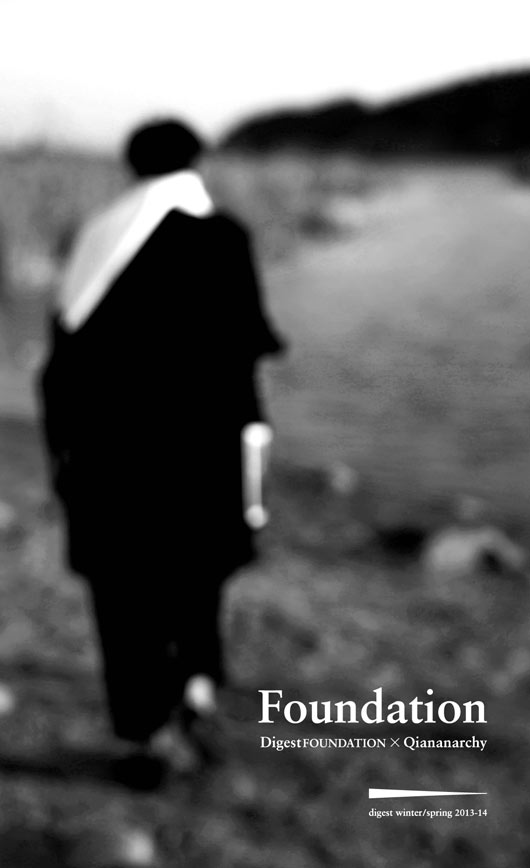

成衣系列“消” [ 基本 Foundation ]
在2012年春夏做第三个系列“模度”的时候,发现时装设计师这个身份在我身上已然找不到踪迹了,与朋友聊天时会说,叫我“做服装设计的”吧。那时候就在想,怎样能做出一些有风貌而不仅仅是有风格的日常装呢,遂将几件剪裁明了得当的款式标注为“消化设计基本款”。
在之后的两个系列中,这个小分线被不断扩充。每件基本款,我几乎都要从立裁一直做到制版的最后一步。当时把工作室称作“消化”,就是想着还未及而立之年的人,怎能把他人所穿之服冠上自己的名字?所以有时候不听古人云都不成,终于要岁入三十了,才找到了那几件可以注上自己名字的衣服。这次的成衣系列便从“基本 为"foundation”展开。
在时尚界,不时有圈内人士(为"insiders)笑谈哪位设计师又翻出自己的过往设计(为"archives,)换了面料当新款。我偶尔也觉得那样有江郎才尽之嫌。但在做了几个系列之后,发现一款看似简单,但却对剪裁和比例控制很考究(为"inner cutting)的衣服,在制版和缝合过程中需要权衡的东西太多,很难在这么短的时尚周期(每六个月推出一个全新系列)内,打磨出她们应有的光芒。这大概就是 “服装”在工业时代变成了“时装”之后带给人们最致命的影响。人人都奔着“更高、更快、更强”去工作,甚至去生活,可不静何来动?不眠何时醒?也许,这是我决定要展开基本系列的主因——不为利益所趋的去为人,去做事,衣装也要如斯。
子曰:“裔不谋夏,夷不乱华。”
《左传•定公十年》疏云:“中国有礼仪之大,故称夏;有章服之美,谓之华。”
在翻读了《紫禁城杂志》2013年8月刊,题为“打开古人的衣箱”后,重新认识了这段话。我总跟别人谈及,服装是有智慧的,但我知道哪怕是“智慧”这两个如此美好的字眼,仍不能说明服装所承之华。友人告诉我,在成体系的文字出现之前,母系氏族中的女人们通过在衣物上绣出图案来记载历史。所以现在我们看到的传统纹样,在人类文明的早期,都有其特定含义。有纹便成章,所以章服不能简单视作为了划分等级而设置的服装,她装载了原始人类社会的生活和记忆。所以“中国有礼仪之大,故称夏;有章服之美,谓之华。”
而我们已然淡忘了这些,被现代化的电气声色所迷。我们看似变得独立与自由,实则成了没有母辈父兄的孤儿。
从遮蔽的文明到被遮蔽的文明,惟植基立本,成德达材可守,其余才作笑谈。

RTW Line Xiao [ Foundation ]
In the making the third series of SS 2012, “le modulor”, I realized that my role as a fashion designer was losing its traces. Instead, I asked my friends to call me “the person who designs clothes”. At the time, I contemplated on how to make stylish everyday wear that’s also unique. In this course, I have marked a few distinctively tailored pieces I have made as “the foundations of Digest Design”.
In the following two series, this sub-line continued to expand. For every basic model, I worked from draping to the last steps of pattern making. I gave my studio the name “Digest”, bearing in mind of those who have yet to establish their individualities and how would they fashion their style in the clothes they wear? Thus, one is bound to follow the adage of the ancients, as I am about to enter my thirties, I have finally found a few pieces of clothing that represents who I am. And this RTW line unfolds from this “foundation”.
In the fashion industry, there are often insiders who gossip about so and so designer taking out pieces from his archive and present them as new models by only exchanging fabrics. From time to time, I would also be skeptical of such behaviors as a manifestation of reaching the bottleneck of one’s creativity. However, having worked on these lines, I realized that a seemingly simple piece may have various degrees of control that need to be balanced on the tailoring and proportion of its inner cutting, as well as, on its patterns and sewing. It is difficult to refine their due radiance within such short fashion period (presenting a new series within every six months). It is perhaps the most critical impact of the transformation of “clothing” to “fashion” in the industrial era. People aim to become “higher, faster and stronger” in their work and even in their life, yet how would one achieve motion without stillness? And if one does not sleep, how would he awake? Perhaps, it was the primary reason why I decided to develop the basic line – to think of others and work without the motivation of personal interests, and clothes should also be made according to this principle.
Confucius said, “The descendants would not conspire the Xia, and the Yi would not cause disorder in China”
"Zuozhuan, Tenth year of the Ding", "The grand civilization inherited in Chinese states is called Xia. The great motif of rituals decorated in magnificant clothes is called Hua."
On the August 2013 issue of the Forbidden City magazine, the article “Opening the suitcase of the ancients”, gave me a new understanding of this phrase. I often speak to others that clothes represent freedom, although I am aware that even the wonderful term of “wisdom” does not suffice to expound on the elegance in clothes. Some friends have told me that prior to the formation of our linguistic system, women in matriarchal societies recorded history through the images sewn onto clothing. The traditional images we see today embody unique meanings in the earlier periods of civilization. Traces lend to verses, therefore, the Zhang costume cannot be simply understood as clothes that distinguished social order, but also as carriers of the lives and memories of ancient civil society. Therefore, the greatness of rituals of China is called Xia, and with the beauty of the Zhang customs, is called elegance.” Unfortunately we have forgotten about these, and are mesmerized by the technology of modernization. It seems that we have become independent and free, but are in fact orphans who have lost their ancestors and relatives.
From nature-based culture to artifact-based culture, only to unveil the foundation of civilization could lead to virtue. The rest cultural segments then will be topics in the contemporary.

Digest Foundation x Qiananarchy
这一季的主要款式都附有潜浅的照片,她是消化自成立以来一直在合作的摄影师,这也是消化成衣系列首次与独立创作人的合作。我们并没有把照片大量印制在衣服表面,而是按着每件衣服的性情,安放在了里面,贴着穿着者的肩背,给他们以安全和慰借。虽声色不动,却暗流股股。我们捕捉潜藏在黑暗中的光,而不是简单地融入,或者,我们还想变成那些光,给在黑暗中的人们以希望。
我喜欢背面。一个美丽的背面制造一个美丽的正面。当你无精打采的时候,想着是不是自己的正面出了什么问题,而后你不得不去端正自己背部的姿势。它是你的精神被安放的地方。
—— MY DEAR BOMB by Yohji Yamamoto
我们也喜欢背面。
The main pieces of this season adopt photographs by Qiananarchy - a photographer who has collaborated with Digest Studio since the beginning. This is the first collaboration between Digest RTW with independent artists. We did not print large numbers of photographs on the garments, instead, we assigned the images according to the nature of individual pieces, pasting them onto the shoulder and the back of the wearers in order to give them a sense of peace and protection. Although it may seem nonchalant, the energy of these images overflow onto the pieces. We capture the light hidden by darkness rather than simply incorporating them, perhaps, we also wish to become the light, and giving hope to those who are still wandering in the dark.
I love the back. A beautiful back makes a beautiful front. When you slouch, think about what happens to your front. You have to keep your back in the right position. This is where your spirit lies.
—— MY DEAR BOMB by Yohji Yamamoto
We also like the back.
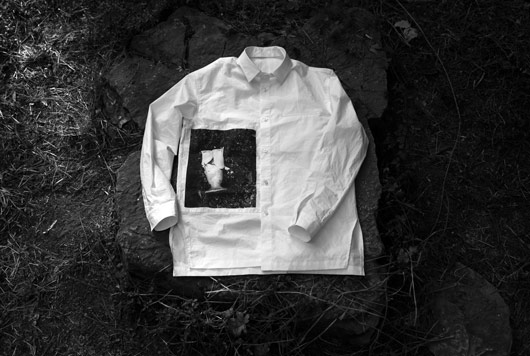
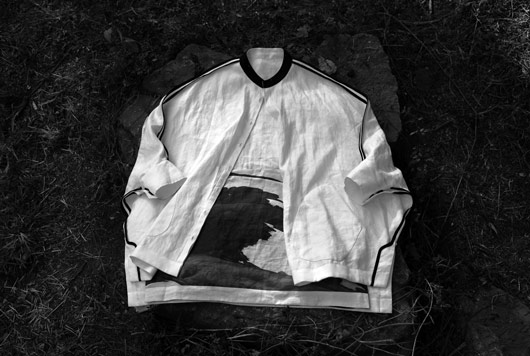
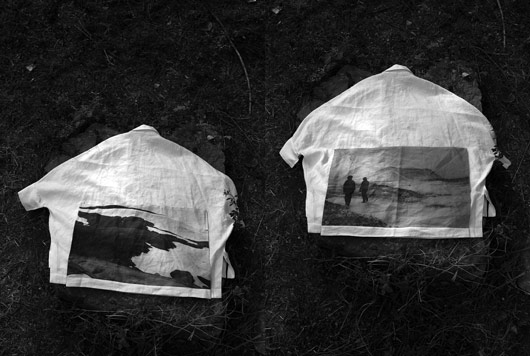
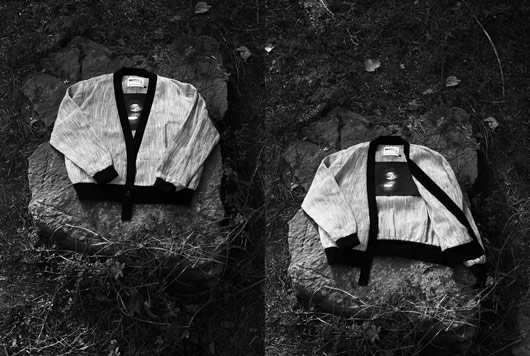
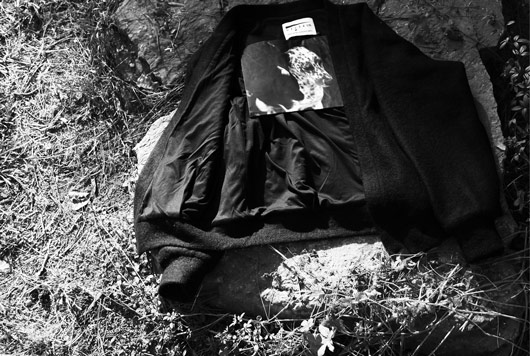
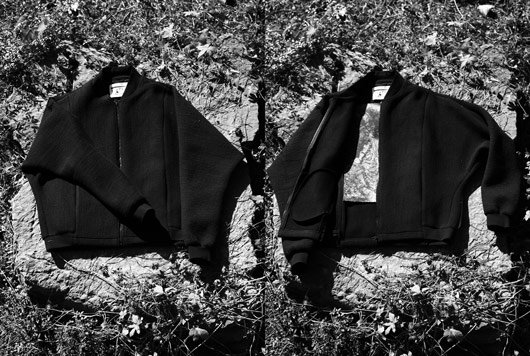
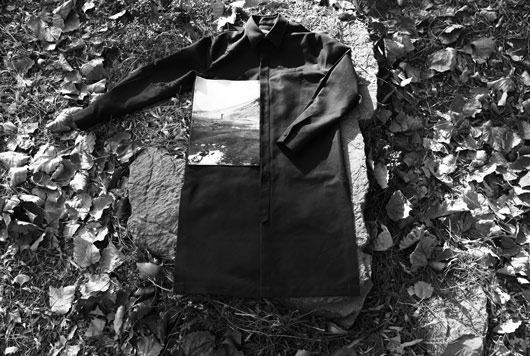
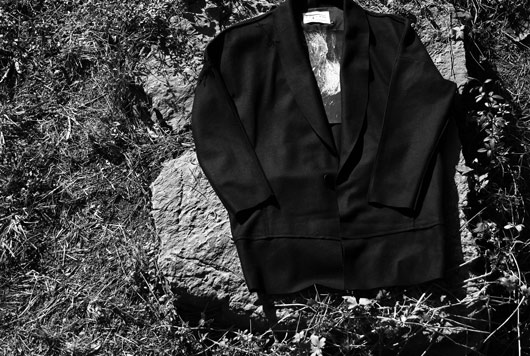
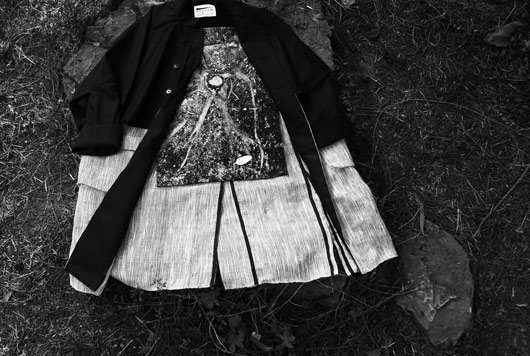
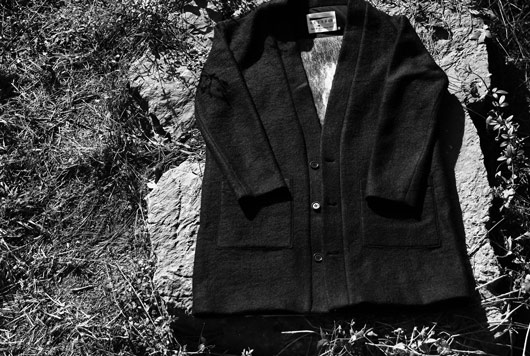
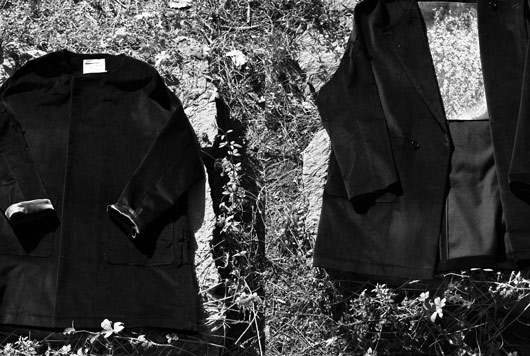
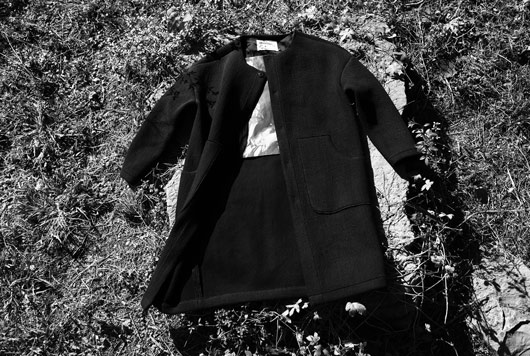
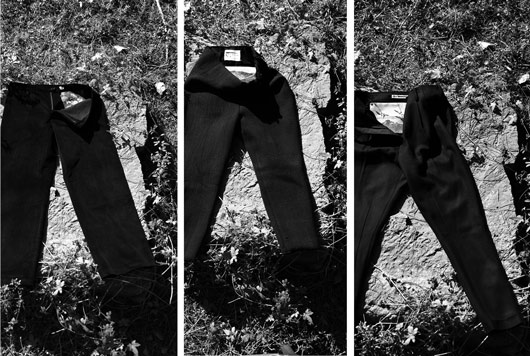
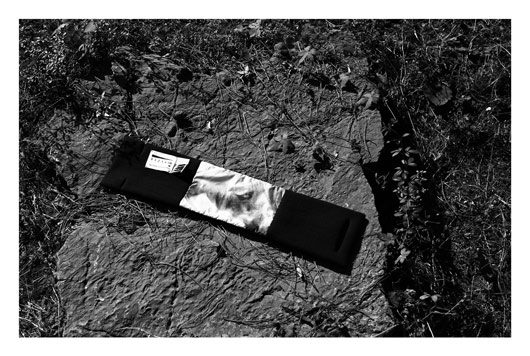
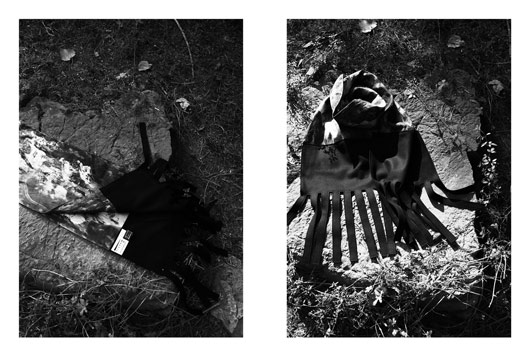

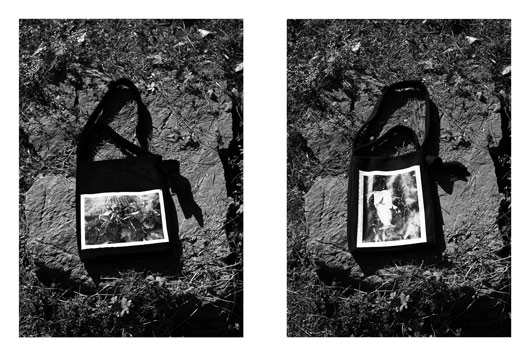
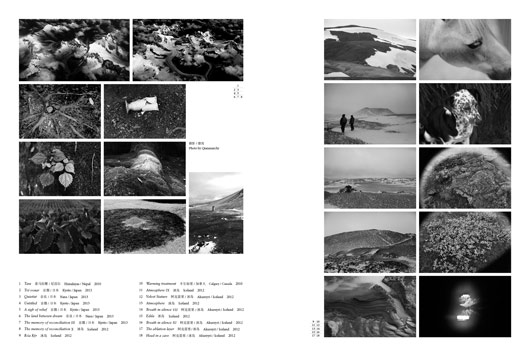
post date: 2013/12/14